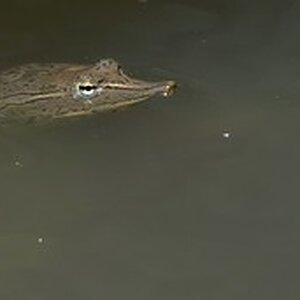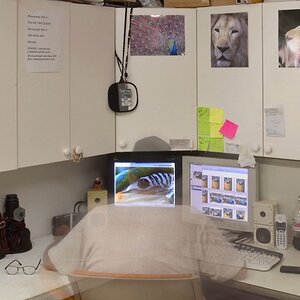Imaginis
TPF Noob!
- Joined
- Mar 23, 2009
- Messages
- 47
- Reaction score
- 1
- Location
- Maryland, DC, Virginia
- Website
- www.svenler.com
- Can others edit my Photos
- Photos NOT OK to edit
A little while ago, I wrote an article about the best Microstock websites for people to earn easy money with their photographs (here). I received a few responses from people asking me how to prepare their photographs for approval and how to use keywords, so I decided to write an article on this topic as well. Since the guidelines are very similar for Microstock and Macrostock Photography, you can apply them to both.
First of all: If you only use a digital point and shoot camera, the chances of getting your pictures accepted are rather low (not impossible), as the smaller sensor on point and shoot cameras is more prone to noise.
Choosing a Photograph for Stock
Before putting the work into uploading your pictures to one of the various stock photo sites, try to think about the potential value of the photograph. While a photograph may have a lot of value to you for personal reasons, it may not have the same objective value to other people. Photos that sell best are the ones that either have a concept or an idea or the ones that just have a good general use. On the one hand, a concept can be quite complex from a family over a dinning table with empty plates to show dieting, hunger, or poverty. On the other hand, it can be just an airplane wing with the clouds below to show how technological advancement brought us the freedom to travel to places. Good general pictures can be cloudscapes, as they can be interpreted in many ways. A dark sky can be interpreted as solitude or despair, while a bright sky with fluffy clouds may be interpreted as happiness and warmth.
Preparing the Photo for Submission to Stock
Submitting your photos and getting them approved is the hardest part of the job. Most stock photographers that I know have an acceptance rate below 40%. Although my submission rate is higher, I do not give in to the illusion that every photo will be accepted. If you meet a few basic requirements that are pretty much the same across all stock photography sites, you will certainly get a higher percentage of photos approved:
1) Convert your photo to jpeg format with the lowest level of compression (the best quality).
2) Make sure that your pictures does not contain any noise or other artifacts. Some people say that the picture should not have any visible noise at 100%, but I have seen stock sites zoom in as much as 300% to find noise. If you find your photo to have noise, you can use software like NeatImage to remove the noise.
3) If your photo has people in it that can be identified (e.g. visible faces), you must include a model release with the photo. If you think that the stock agencies are anal about noise, try to send them a model release that you drafted yourself. Instead, I use a model release from Getty Images. They spend a lot of money to have their lawyers draft up a very good model release, so chances are that these releases are better than what you will come up with.
4) Your photo may not contain any trademarks whatsoever. As with noise and artifacts, the stock agency will zoom in up to 300% to find those trademarks. It actually happened once to me before when I sent in a picture taken in New York. Although I was careful to remove all logos and brand names, the stock agency found one in a window that even at 300% could hardly be seen. After removing the trademark in Photoshop, everything was fine.
5) Some people believe in uploading smaller photos while others believe in uploading full-size photos. What you do is up to you, as long as you stay above the minimum file size requirement. Just take note that smaller photos do not have as much commercial use, which can be an advantage or disadvantage depending on your business model. In addition, the higher the resolution, the higher your per sale income potential.
Choosing Keywords for your Photos
After you mastered the previous steps, its time to think about the proper keywords for your images. Remember that your are competing with millions of other images, so your keywords need to be unique and at the same time sensible. If you are starting out, the best thing to do is to look at the keywords from similar pictures and use thesaurus to find synonyms. In any case, you should also keyword the mood and concept that your photo exhibits. Overall, you should not choose more than 10-15 keywords for each image.
Choosing the right Microstock Sites
To figure out which sites have the highest payouts and the greatest potential, please refer to my article How and Where to make money with Microstock Photography. I have heard from many people who read it and are actually making even more than me from Stock Photography, so I would say its a pretty good compendium and starting point. Personally, I found iStockphoto and Dreamstime to be working best for me.
First of all: If you only use a digital point and shoot camera, the chances of getting your pictures accepted are rather low (not impossible), as the smaller sensor on point and shoot cameras is more prone to noise.
Choosing a Photograph for Stock
Before putting the work into uploading your pictures to one of the various stock photo sites, try to think about the potential value of the photograph. While a photograph may have a lot of value to you for personal reasons, it may not have the same objective value to other people. Photos that sell best are the ones that either have a concept or an idea or the ones that just have a good general use. On the one hand, a concept can be quite complex from a family over a dinning table with empty plates to show dieting, hunger, or poverty. On the other hand, it can be just an airplane wing with the clouds below to show how technological advancement brought us the freedom to travel to places. Good general pictures can be cloudscapes, as they can be interpreted in many ways. A dark sky can be interpreted as solitude or despair, while a bright sky with fluffy clouds may be interpreted as happiness and warmth.
Preparing the Photo for Submission to Stock
Submitting your photos and getting them approved is the hardest part of the job. Most stock photographers that I know have an acceptance rate below 40%. Although my submission rate is higher, I do not give in to the illusion that every photo will be accepted. If you meet a few basic requirements that are pretty much the same across all stock photography sites, you will certainly get a higher percentage of photos approved:
1) Convert your photo to jpeg format with the lowest level of compression (the best quality).
2) Make sure that your pictures does not contain any noise or other artifacts. Some people say that the picture should not have any visible noise at 100%, but I have seen stock sites zoom in as much as 300% to find noise. If you find your photo to have noise, you can use software like NeatImage to remove the noise.
3) If your photo has people in it that can be identified (e.g. visible faces), you must include a model release with the photo. If you think that the stock agencies are anal about noise, try to send them a model release that you drafted yourself. Instead, I use a model release from Getty Images. They spend a lot of money to have their lawyers draft up a very good model release, so chances are that these releases are better than what you will come up with.
4) Your photo may not contain any trademarks whatsoever. As with noise and artifacts, the stock agency will zoom in up to 300% to find those trademarks. It actually happened once to me before when I sent in a picture taken in New York. Although I was careful to remove all logos and brand names, the stock agency found one in a window that even at 300% could hardly be seen. After removing the trademark in Photoshop, everything was fine.
5) Some people believe in uploading smaller photos while others believe in uploading full-size photos. What you do is up to you, as long as you stay above the minimum file size requirement. Just take note that smaller photos do not have as much commercial use, which can be an advantage or disadvantage depending on your business model. In addition, the higher the resolution, the higher your per sale income potential.
Choosing Keywords for your Photos
After you mastered the previous steps, its time to think about the proper keywords for your images. Remember that your are competing with millions of other images, so your keywords need to be unique and at the same time sensible. If you are starting out, the best thing to do is to look at the keywords from similar pictures and use thesaurus to find synonyms. In any case, you should also keyword the mood and concept that your photo exhibits. Overall, you should not choose more than 10-15 keywords for each image.
Choosing the right Microstock Sites
To figure out which sites have the highest payouts and the greatest potential, please refer to my article How and Where to make money with Microstock Photography. I have heard from many people who read it and are actually making even more than me from Stock Photography, so I would say its a pretty good compendium and starting point. Personally, I found iStockphoto and Dreamstime to be working best for me.


![[No title]](/data/xfmg/thumbnail/38/38725-bdf734721ecaad862bb3e3a856c81df5.jpg?1619738702)


![[No title]](/data/xfmg/thumbnail/38/38727-8e7c94a88000531231f3040ce330aced.jpg?1619738702)




![[No title]](/data/xfmg/thumbnail/32/32983-e979bc0c64090f2693d7fae6b3cc425c.jpg?1619735813)


![[No title]](/data/xfmg/thumbnail/37/37245-5f15b292311b21913f10cc41f40682ba.jpg?1619737952)